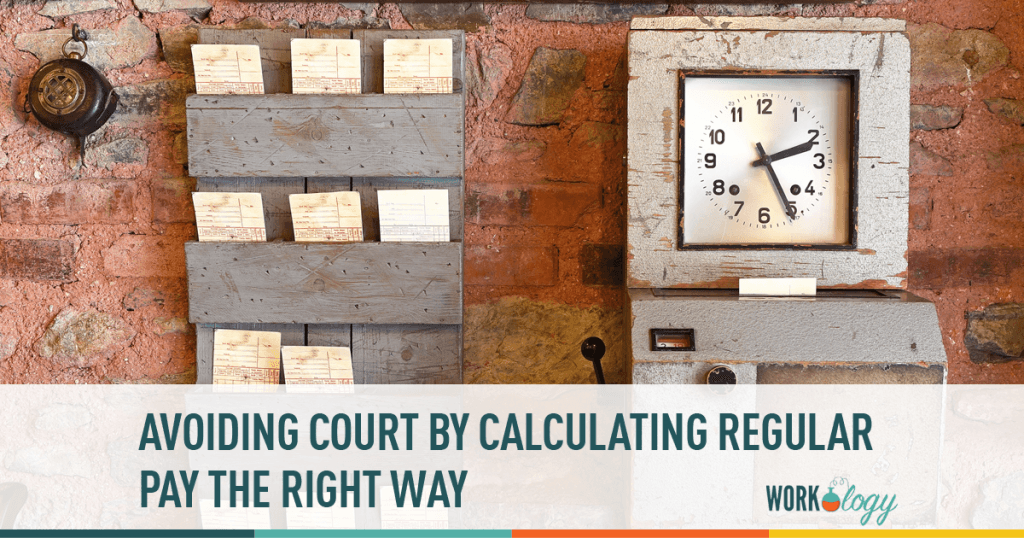You are probably thinking, “Regular rate of pay? How can I screw that up, it is what I pay someone per hour.” Unfortunately, that is not correct. You are not the only one to make that mistake, it cost Walmart $33 million in 2005. So you want to avoid screwing up an employee’s regular rate of pay.
Why is ‘regular rate of pay’ important?
The wage for which someone comes to work, that offer you make, is referred to as their “straight time” pay rate. Regular rate of pay is the amount of pay on which the overtime rate is paid. It is a pretty straight forward calculation if the employee is paid an hourly wage, never works more than 40 hours, never receives bonuses or commission, or works two different jobs at different rates of pay. Unfortunately, the world is not that straight forward. Employers offer productivity bonuses, they have positions that pay commissions, they have employees work different jobs at different rates of pay and of course many employees work overtime. So what is included?
Definition
According to the USDOL the regular rate of pay must include:
All remuneration for employment except certain payments excluded by the Act itself
Non-cash payments are made to employees in the form of goods or facilities, the reasonable cost to the employer or fair value of such goods or facilities must be included in the regular rate.
This means all non-discretionary bonuses, commissions, premiums for shift work or hazardous duty.
What is not included:
Pay for expenses incurred on the employer’s behalf, premium payments for overtime work or the true premiums paid for work on Saturdays, Sundays, and holidays, discretionary bonuses, gifts and payments in the nature of gifts on special occasions, and payments for occasional periods when no work is performed due to vacation, holidays, or illness.
The calculation
Let’s take a look at a simple scenario:
Straight time rate of $10/hr
Shift premium of $0.25/hr
Daily production bonus of $5/day
Employee works 45 hours this week. What is the regular rate of pay and how much overtime is owed?
($10 + .25) x 45 = $461.25 Add the $25 for production bonuses = $486.25
$486.25/45 = $10.81 as the regular rate $10.81 x 1.5 = $16.22 for the overtime rate
$10.81 x 40 = $432.40
5 hours x $16.22 = $81.10
$432.00 + $81.10 = $513.50 Total compensation
Many people would have calculated this way:
$10.25 x 40 = $410
$10.25 x 1.5 = $15.38 x 5 = $76.88
$410 + $76.88 = $486.88
See the difference that the “regular rate” makes in this calculation? $26.62 per pay check. For the employee that adds up over the course of a year.
The calculation can get more complicated than this example. If you are paying production bonuses over multiple weeks, or even months, then the calculation requires reviewing time worked during the weeks for which the bonus was earned. If you are paying employees two different rates, depending on the work they are doing then you have to be careful. Piece rates, commissions, etc. all add some complexity.
The major point of this post is to point out how important it is to get this correct. If the USDOL comes knocking on your door because someone has complained that they are not being paid correctly they will make you do all these calculations for the previous two years and they will want it done in about a week.
More resources for ‘regular rate of pay’
Regular Rate of Pay under the FLSA
Bonuses, Commissions Included in Regular Rate of Pay Calculation
Calculating Overtime for Non-Exempt Employees and the FLSA Regular Rate








